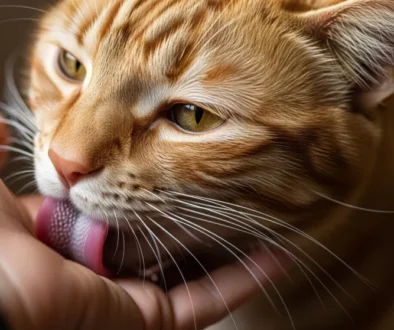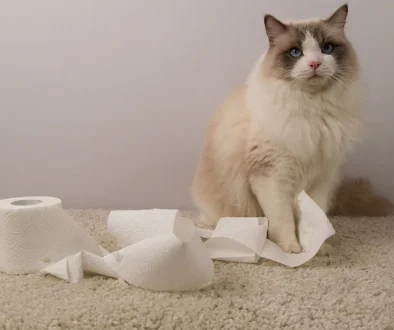What to Feed a Fussy Cat?
If you’re a cat owner, you’ve probably asked yourself at least once, “What to feed a fussy cat?” Picky eaters are common in the feline world, and dealing with a cat that turns its nose up at food can be both frustrating and worrisome. Whether your cat is snubbing dry kibble, ignoring wet food, or walking away from even the fanciest treats, you’re not alone.
This guide will help you understand why your cat might be fussy, what foods to try, and how to encourage healthier, more consistent eating habits.
Why Is My Cat So Fussy?
Before changing your cat’s diet, it’s essential to understand the possible reasons behind their picky behavior. Here are a few common causes:
- Medical issues: Dental problems, digestive discomfort, or other underlying health conditions may cause your cat to avoid food.
- Food boredom: Like humans, cats can get tired of eating the same food every day.
- Texture and temperature: Some cats prefer food at room temperature or favor wet food over dry kibble.
- Stress and environment: Loud noises, a new pet, or a change in routine can stress your cat and impact its appetite.
Tip: Always consult your vet if your cat stops eating for more than 24 hours or loses weight suddenly.
What to Feed a Fussy Cat: Top Recommended Options
When dealing with a picky eater, it’s crucial to offer high-quality, palatable food options. Here’s what to feed a fussy cat that’s safe, healthy, and appealing.
1. High-Protein Wet Foods
Wet food is often more aromatic and flavorful than dry kibble, which can entice picky cats.
Top choices include:
- Chicken or turkey pate
- Tuna flakes in broth
- Duck or rabbit formula
2. Mixing Wet and Dry Food
Combining textures can make meals more interesting.
Try this:
- Add a spoonful of wet food on top of dry kibble.
- Mix a little warm water into dry food to release the aroma.
3. Limited-Ingredient Diets
For cats with allergies or sensitivities, limited-ingredient recipes may be more appealing.
| Brand | Main Ingredient | Benefits | Buy It On |
|---|---|---|---|
| Natural Balance L.I.D | Duck & Green Pea | Hypoallergenic | Amazon.com |
| Blue Buffalo Basics | Turkey & Potato | Grain-free | Amazon.com |
| Instinct L.I.D | Rabbit | High-protein, single source |
4. Homemade Meals (With Vet Guidance)
Some cats prefer freshly cooked meals.
Homemade meal ideas:
- Steamed chicken breast
- Boiled salmon (no seasoning)
- Scrambled eggs (no butter or salt)
Always consult your vet before switching to a homemade diet to ensure it’s nutritionally complete.
If your cat is allergic read this: Best Cat Food for Cats with Allergies
5. Cat Food Toppers and Broths
Food toppers add flavor and moisture, which can encourage eating.
Examples include:
- Bone broth (low sodium)
- Freeze-dried liver crumbles
- Tuna water (unsalted)
Create a Feeding Routine for a Fussy Cat
Consistency can make a significant difference. Here’s how to build a feeding plan that works:
1. Set Meal Times
Avoid free-feeding. Offer meals at the same times each day to build routine.
2. Limit Treats
Too many treats can spoil your cat’s appetite for proper meals.
3. Introduce New Foods Slowly
Transition over 7–10 days by mixing new food with old food, gradually increasing the amount.
4. Monitor Portions and Appetite
Track how much your cat eats to notice any patterns or changes.
Ingredients to Look for in Cat Food
Knowing what to feed a fussy cat starts with reading the label. Look for:
- Real meat as the first ingredient
- No artificial preservatives or fillers
- Omega fatty acids for skin and coat
- Taurine (an essential amino acid for cats)
- Moisture content above 70% in wet food
Ingredients to Avoid
Some ingredients may not sit well with picky eaters:
| Ingredient | Why to Avoid |
|---|---|
| By-products | Low nutritional value |
| Artificial colors | Unnecessary and potentially irritating |
| Carrageenan | May cause inflammation |
| Corn, soy, wheat | Common allergens and fillers |
Best Commercial Foods for Fussy Cats (2025)
Here’s a curated list of top-rated foods for picky eaters based on taste and quality:
| Brand | Food Type | Features | Avg. Price |
|---|---|---|---|
| Weruva Cats in the Kitchen | Wet Food | Grain-free, real meat | $$ |
| Hill’s Science Diet Adult | Dry Food | Vet recommended | $$ |
| Sheba Perfect Portions | Wet Food | Convenient servings | $ |
| Tiki Cat After Dark | Wet Food | Organ meats, high protein | $$$ |
| Purina Pro Plan Savor | Mixed | High flavor variety | $$ |
Encouraging Better Eating Habits
Sometimes, it’s not what to feed a fussy cat, but how you feed them that matters. Try these strategies:
✅ Warm Up the Food
Slightly warm wet food to room temperature for a stronger aroma.
✅ Rotate Proteins
Switch between chicken, fish, and beef every few weeks to prevent food fatigue.
✅ Use Puzzle Feeders
Turn mealtime into a game. It stimulates your cat mentally and physically.
✅ Clean Bowls Regularly
Cats are sensitive to smell; clean bowls reduce odor build-up.
When to See a Vet
If your cat continues to reject food despite changes, it’s time to consult a professional. Signs to watch for include:
- Sudden weight loss
- Vomiting or diarrhea
- Lethargy or hiding behavior
- Bad breath (could indicate dental issues)
Frequently Asked Questions (FAQs)
1. What should I do if my cat refuses all food?
If your cat hasn’t eaten in 24 hours, consult a veterinarian. Lack of food can lead to hepatic lipidosis, a dangerous liver condition in cats.
2. Can I feed my fussy cat human food?
Some human foods are safe, like boiled chicken or scrambled eggs, but always check with your vet to ensure it’s balanced and free from harmful ingredients.
3. Is it okay to switch cat food brands often?
Frequent switching without a transition can upset your cat’s stomach. Always introduce new food slowly over a week.
4. What flavors do most picky cats prefer?
Many cats love tuna, chicken, or liver flavors. Try different options to find what your cat prefers.
5. Do older cats become pickier?
Yes, senior cats may develop dental issues or reduced smell/taste, making them fussier. They may benefit from softer, more aromatic food.
6. How many times should I feed a fussy cat per day?
Two to three small meals a day work best for picky eaters. Avoid leaving food out all day.
Final Thoughts
Feeding a fussy cat doesn’t have to be a daily struggle. With the right approach offering high-quality food, experimenting with textures and flavors, and maintaining a consistent routine you can help your feline friend enjoy mealtime again.
Remember, every cat is different. What works for one might not work for another. Patience, observation, and a little trial and error go a long way.





Frontier Pets Dog Food Review - Emzillatech
June 18, 2025 @ 3:42 pm
[…] Pets Cat Food ReviewWhat to Feed a Fussy Cat?What Is the Best Dog Food for Small Breed […]